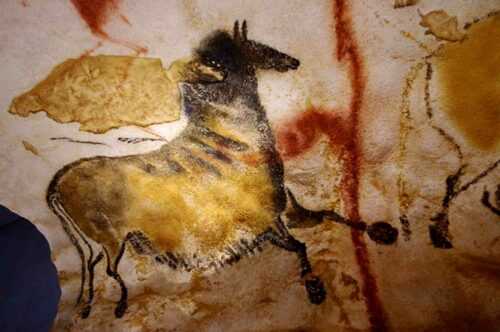
Lascaux Caves can be just explained by saying that it is a setting of a complex of caves. Lascaux is mainly famous for its paintings. Many paintings cover the ceiling of the caves.
Moreover, these paintings represent a past hunting success as well as a mystical ritual so that they can improve future hunting endeavors. Artists had tried to explain the basis of real life, the value of nature and had shown respect to the environmental conditions.
There are over 2000 images and more than that found in the caves which are divided mainly into two groups that are animals and symbols.
It has been found from some researches that each animal species that has been pictured at Lascaux Caves represents a particular period of that calendar which is according to their eating habits.
It is a beautiful experience to visit there and explore history. These paintings give a golden example of a human figure, some abstract signs which have yet to be solved.
Lascaux Caves France

In 1940, the Lascaux Caves complex was discovered by Marcel Ravidat, Jacques Marsal, Georges Agnel, and Simon Coencasin who were all teenagers. Moreover, these caves are located near to the village of Montignac, which in the Dordogne region of southwestern France.
It is primarily known for its paintings which mainly cover the walls and ceilings of the caves. The most famous chambers of these caves are “Hall of the Bulls,” the “Apse,” the “Axial Gallery,” and the “Shaft.”
In total, the galleries of Lascaux Caves contain around 2,000 images, about 900 of which are animals, and the remaining are geometric symbols of varying shapes with abstract symbols.
Lascaux gets referred to as “The Sistine Chapel of Prehistory, and this is due to the reason that it has many perfect images, a realistic size that expresses exceptional realism and also their spectacular colors.
In 1979, Lascaux Caves got added to the list of UNESCO World Heritage Sites, along with the 147 prehistoric sites and 25 decorated caves which get also located in the Vezere Valley of the Correze and Dordogne regions.
Lascaux Pronunciation
The art that has got shown in the paintings of the caves was not only designed to look some creative but they got created as part of some mythical ritual. Lascaux was a religious sanctuary that was used for initiation ceremonies at that time.
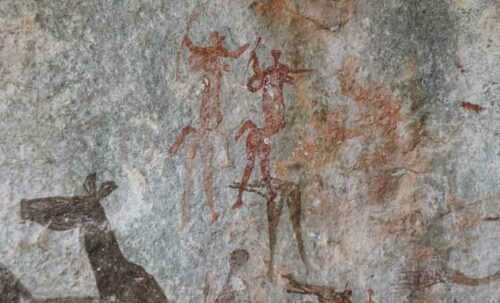
We can also interpret that artists have painted the pictures of wounded bison in the hope of that this type of primitive “visualization” might make this imagined and realistic scene to happen in the real world.
Lascaux Caves Paintings
Paleolithic cave paintings are the art for which Lascaux is most famous. Paleolithic cave paintings are exceptionally different in size, quality, sophistication, antiquity due to which these are found in complex of caves in the Dordogne region of southwestern France.
These paintings are almost 20,000 years old. Primarily these paintings consist of large animals; mainly those animals are found in pictures which were once native to that region.
Lascaux is situated in Vézère Valley where many other decorated paintings have got found till the beginning of the twentieth century. Around 600 of paintings cover the ceiling of these caves. These paintings represent contemporary, typical fauna, large animals.
The nature of the Lascaux paintings can also get explained by faith in real life of the pictured species in which the artists had tried their best to respect their actual environmental conditions. There is a painting referred to as “The Crossed Bison,” is found which has set an example for the skill of the Paleolithic cave painters.

Where are the Lascaux Caves?
Lascaux is mainly the setting of the complex of the caves. It is located near to the village of Montignac, which hales in the department of Dordogne in
18-year-old Marcel Ravidat has discovered the entrance to the Lascaux Caves in1940. Moreover, in 1948 the caves had become open to the public.
In 1979, Lascaux caves were introduced in the list UNESCO World Heritage Sites which represent these caves as an element of the Prehistoric Sites and Decorated Caves of the Vézère Valley.
Each year only some people are allowed just for few days to enter inside the caves and this has to be done in order to prevent the magnificent paintings, drawings, and engravings from vanishing and joining their creators entirely.
One thing that has been proven successful in the restoration of the entrance of the caves was permitting the sunlight to enter the Lascaux caves.
Caves of Lascaux
Around 6,000 figures have got contained in the complex caves of Lascaux which can get mainly categorized into three groups and that are, animals, human characters, and abstract signs. No other images of the surrounding landscape or the vegetation of that time have got founded in the caves.
Many of the leading models have got painted onto the wall by using the colour red, yellow, and black colour from the various multiplicity of manganese-containing pigments along with some iron compounds like hematite, iron dioxide, and also mineral pigments got used.
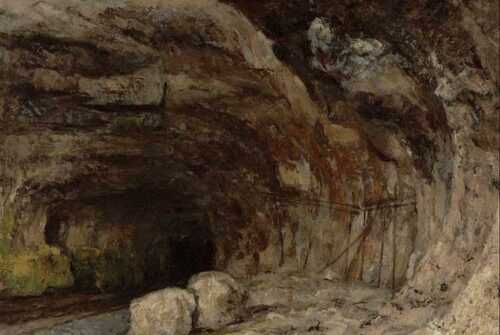
There are two types of cave art in Paleolithic culture that mainly predominates. First one was drawing and the second was engraving.
Either they were used independently or either in combination. Engraving is mostly the artistic technique which is used to generate a difference in color.
The resulting line which is engraved looks just like a drawing. It is quite uneven to distribute the imagery. In this Passageway is the most heavily decorated area.
Hall of Bulls Lascaux Caves
The main entrance of the Lascaux Caves leads directly into the main chamber which is known as Hall of the Bulls. Probably, Hall of the Bulls got recognized as one of the most famous underground galleries of the Paleolithic art.
It is 19 meters or 62 feet in length, and its width varies from 5.5 meters or 18 feet. When he makes entry from the entrance, then the very first thing that he gets encounter is a horse’s head and even the neck with a fuzzy mane.
Moreover, the second one is the mysterious Unicorn. Not only these two, but there are many more such notable pictures found in the Halls Of the Bulls, and that includes Frieze of the Black Horses (a long line of aurochs and horses), heads of some six bulls, the Frieze of the Small Stags, a headless horse and a bear.
Now there are two exits found in the Hall of the Bulls. One is to the main passageway and other leads to the slightly smaller Axial Gallery which is a painting gallery.
The Animals Painted In the Lascaux Caves
There are many chronological questions regarding the age of Lascaux Caves paintings when they got created, and the identity of the oldest arts in the caves on which still debates are going on. Moreover, the style of Lascaux paintings was consonant with other art which got discovered at that time.
Some specific characteristics of that style have been found which includes bison horns that are shown in front-view; front horns of bovines which are depicted by a simple curve. And there is also the rear horn which is more sinuous; deer antlers are described from a particular perspective, and so on.

Horses in the paintings mainly represent the end of the winter or the beginning of the springs too. Aurochs are found to represents high summer while the stags are found to mark the onset of autumn.
However, it is quite uneven to see the distribution of imagery. Moreover, more than half of the total art of these caves got found on the walls and ceiling of the Apse.
Lascaux Caves Location
Lascaux Caves locates near to the village of Montignac, that lies in the department of Dordogne in the southwestern France. Lascaux Caves got discovered in the year 1940 by the teenagers namely, Marcel Ravidat, Jacques Marsal, Georges Agnel, and Simon Coencas.
They have found that the walls of the caves got covered with depictions of animals. On July 14, 1948, these complex caves were opened to the public.
However, then in 1963, these caves were closed to the public to paintings restore the paintings to the one original state, and also the monitoring system got introduced daily.
So, these were all the essential aspects for knowing about the Lascaux Caves. Moreover, there is more to explore this fantastic site. Besides, this can be only done when you will visit there and find yourself the creativity of art and culture.
Read Also:
Image Credit

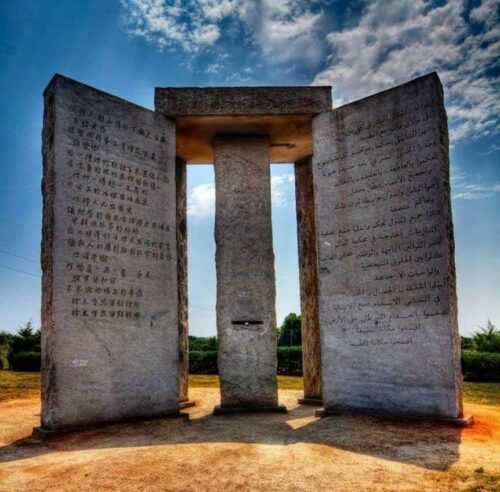
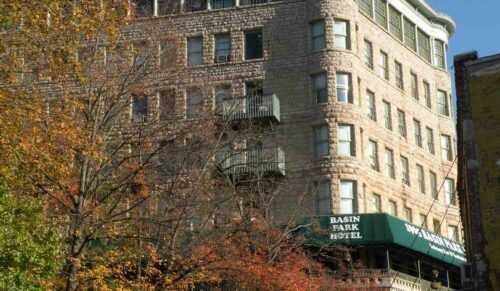




Thank you so much for this! I haven’t been this moved by a post for a long period of time! You have got it, whatever that means in blogging. Well, You’re definitely someone that has something to say that people should hear. Keep up the good work. Keep on inspiring the people!
My brother suggested I might like this blog. He was entirely right. This post actually made my day. You can not imagine simply how much time I spent for this information! Thanks!
Thank you so much for letting me express my feeling about your post.
Learn what the best practices are for commenting on blogs.
Amazing write-up!
Very Good & much Great.
Your post is very helpful all key is working on my pc; thanks for sharing.
I am happy to share this blog it’s an awesome blog I really impressed. Thanks for sharing.
I have to bookmark your website. I will visit your website again soon.
Thank you for sharing it.
Great efforts
Really interesting post, thanks.
It’s really good; please keep it up…
thanks a lot; good luck
Wow, this blog is awesome. Wish to see much more like this.
Nice Post. Keep going on.
I’ve been using some of these techniques on my blog. But I didn’t know the phrase “Social Proof”.